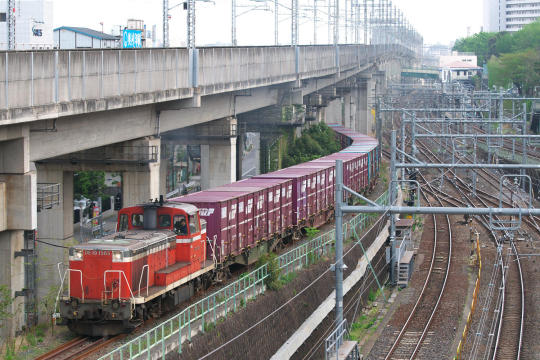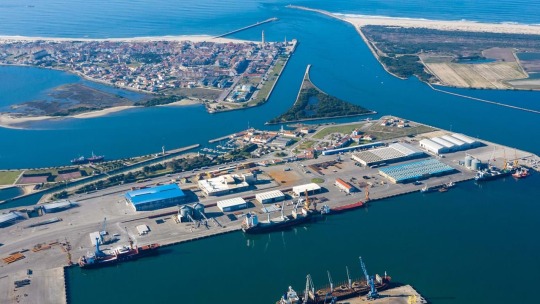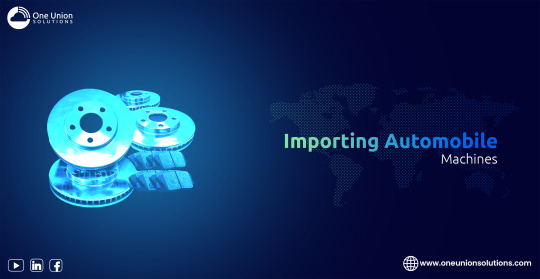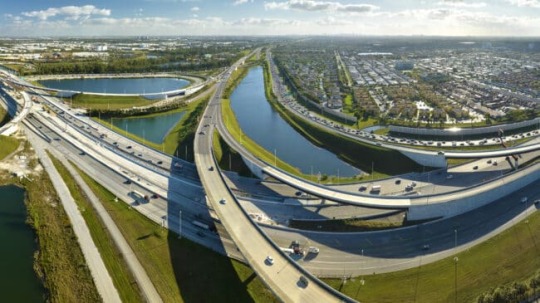#Multimodal and intermodal transport
Explore tagged Tumblr posts
Text
Supply chain management services
Fuel your business growth with Zenith Eclipse Co, your trusted partner in supply chain management services. We transform chaotic logistics into smooth, scalable operations that adapt to your market’s needs. From supplier coordination to global freight and final-mile delivery, our team builds efficient, end-to-end systems that save you time and money. With real-time tracking, data-driven insights, and global reach, we turn challenges into opportunities. Whether you’re scaling up or optimizing your flow, we build strategies that grow with you. It’s time to take control of your supply chain with confidence. Let’s get started—call our experts today at +968 7140 1000
1 note
·
View note
Text
Trains in Anime - Arcane Season 2
As you may have heard, the second season of Arcane is out. Arcane is a complex and amazing show about love and loss, about power and class, about friends and family, about playing god and being god. It’s amazing, it’s beautiful, it’s heartbreaking, it’s an ad for a game you should never ever play, it sets the benchmark for what animation can be and do in this decade and beyond.
But most importantly, it has trains. Let's talk about them.
Prison Train
Apart from a few new angles on the funicular we already know from season 1 and some mine carts, there are two interesting train-like thingies in this season. The first one appears in episode 4 and is used to bring prisoners and main characters to the prison island. And it's weird.

Individual train cars run on two parallel lines of… something, with an overhead line ostensibly providing electric power (there are sparks from it). The running lines are not directly supported by anything, they run between pillars in the sea, and there, they're placed on some roller structures.
The main thing that gets me about this is structural. Are these ropes or steel beams? Either way, why don't they bend?

It's easy to say this is wrong and just move on, but it's more interesting to think of ways this system can make sense.
Personally, I choose to interpret it as a variation of the Aerobus design.

Picture: Rowema AG, CC-BY-SA 3.0, via Wikimedia Commons
The Aerobes is a classic gadgetbahn, a thing where an inventor said, "trains are boring, let's do a new thing that's exactly the same but proprietary, untested and less practical". In this case, it was a Swiss aerial cable car designer who came up with it. The design is that the train cars run on either two parallel steel beams or cables that are above it, and that are themselves suspended in the air. The resulting thing doesn't look too different from e.g. the Wuppertal Schwebebahn or similar systems (not that there are many), but with a much lighter infrastructure based mostly on steel ropes. Two commercial lines were built in the 1970s, one in Québec that lasted surprisingly long, one in Mannheim, Germany, for an exhibition, and that was where it stopped.
With the weird roller thing, I'm choosing to interpret this prison transport system as a similar thing. In this case the carrying rails/ropes are underneath the vehicle, but that doesn't change much. The vehicle is probably self-propelled and the rollers are just there to deal with heat expansion. I'll assume it's some magic steel so the wires don't move perceptibly as the vehicles pass over it. The vehicles themselves are only run singly, never as trains, presumably to avoid overloading the system.

There are two vehicles, one with a ramp, one with doors that open outwards. It's possible that this represents the totality of that system. Somewhat unusually for a prison train, the system is fully automated and can be used easily by escaped prisoners and by bloodthirsty alchemical monsters trying to break in. It looks cool though.
Intermodal transport
The other rail thing I want to talk comes at the end of the show, episode 9, and here Netflix really screws me over. It was basically impossible to take screenshots, even though it worked just fine for episode 4. They ended up crazy blurry, of the wrong moment, whatever. I've been making use of Fancaps.net, whose collection is exhaustive, but sadly they tend to focus more on important character moments and cool stuff and less on rail infrastructure. So please excuse the wall of text.
At that point in the show a big invasion is happening, and our heroes are trying to defend themselves. One of the means they have is an innovative form of multimodal container transport. The shipping container is brought to the loading station by rail. From there, it is lifted by magic, through a magic gate… and then fired at high speed at the enemies. Fun!

The shipping container and the flat car are both designed to be a bit fantastical, not a direct copy of our modern world, and I can respect that, even though I don't know how these angle brackets are actually supposed to hold the container in place.

But then… look at that truck. Or bogie. I'd give you a better angle but Netflix insisted on making it blurry. Hell, I'll give it to you anyway.

Ignore the foreground, that's just characters frantically trying to save someone's life. What's important is the railroad truck. And as you can sort of see, that's clearly a Y25!
Okay, back up a bit, let me explain. So most rail vehicles have four axles. To go around corners easily, these are not directly attached to the main body. Instead two axles in the front and two in the back are attached to a special frame that can swivel and pivot; the truck or bogie. I think one of these terms may be British and the other North American, but as someone who is neither, I don't actually know, as far as I can tell both are in use.
As the part that holds and guides the axles, provides most of the suspension, takes all of the shocks that the suspension can't, holds braking equipment and propulsion equipment, the bogie of a train is super important. There is a lot of research and development in that area, with designs being constantly refined and improved.
Except when it comes to freight cars. For freight cars, there are two bogies: The French one, used in Europe (excluding the former Soviet Union, probably Finland, and for the UK it's difficult), and the American one, used everywhere else.
This division isn't quite accurate, but it's accurate enough. It's not a law by any means, people keep inventing new trucks for freight cars all the time. But they rarely get sold much. The standard designs are good enough, they get produced in large numbers for cheap, and since they're so standardised, if you use them, you can skip a significant number of steps the approvals process that otherwise come with inventing a new type of rail vehicle.
I am somewhat lying here, in that both the French and the American design are actually large families with many different types, and I assume in particular American rail fans will be angry when I say all their bogies look the same to me… but I'm correct anyway, sorry.
I don't have any good pictures of the American style, so have one from a model railroad car instead:

These are known as Bettendorf-style or sometimes "three piece bogie", their central part is that they have two side frames that hold the axle ends, and one central bolster connecting them. The springs are between the side parts, the bolster isn't directly fixed to them. Rides well on rough tracks, which is why you'll sometimes, rarely, see them on maintenance of way equipment in Europe (although generally beefier versions of the same design. Same in the US).
In contrast, the French version is the Y25.

It also consists of one bolster and two side frames. However, it also usually has additional relatively weak parts at the front and end. The bolster is fixed to the side frames, but it's designed to flex in itself. The springs are between the side frames and the wheel bearings. A characteristic part for the standard type is the "belly" between the wheels, and the hole in there.
Arcane is made by Fortiche, Fortiche are French, and thus their rail car gets a Y25. They spaced it up a little, and in the course removed the suspension and brakes and added a plate over the hole where the central bolster attaches, but it's still clearly a Y25 type bogie.
The rest of the track is a bit weird. The train car doesn't have flanges, instead it runs in grooves in the ground. It's also unclear how it's moved there; it seems to be some kind of winch (you need to turn a handle really hard or push the train car with superpowers). Most importantly, it's unclear why someone built a container delivery railway to the top of the city's tallest tower in the first place. But I am absolutely delighted by the Y25 freight car bogie there.
If you are interested in the wide world of freight car bogies, and you speak German, I strongly recommend Drehgestelle.de, a delightfully old-fashioned website by a single guy who really cares very much. He charts the history of the Y25, the Bettendorf bogie, the earlier Diamond bogie, the German counterpart to the Y25 that used to be popular until it got outlawed, and all the various weird other things that have been tried.
All in all, a good show, I can recommend it.
33 notes
·
View notes
Text
Funding Available to Support Surface Transportation Projects

The U.S. Department of Transportation (DOT) Rebuilding American Infrastructure with Sustainability and Equity (RAISE) Grant Program, formerly known as the BUILD or TIGER program, is offering funding up to $25 million to support highways, bridges, roads, public transportation, passenger and freight rail transportation, port infrastructure, intermodal, and other surface transportation projects that align with identified national objectives. Competitive FY24 RAISE grants should have a significant local and regional impact; reduce greenhouse gas emissions in the transportation sector; incorporate evidence-based climate resilience measures and features; and address the disproportionate negative environmental impacts of transportation on disadvantaged communities.
Applicants may apply for either Planning or Capital Funding. Capital grants will support the implementation of surface transportation projects with a minimum request of no less than $5 million in urban areas and $1 million in rural areas. Planning grants support the planning, preparation, or design of surface transportation projects, including multidisciplinary projects or regional planning, such as master plans transportation corridor plans, and multimodal freight corridor development. There is no minimum award amount for planning grants. The maximum grant request for both implementation and planning grants is $25 million.
Eligible applicants include State, local, and tribal governments, including transit agencies, port authorities, metropolitan planning organizations, and other political subdivisions of state or local governments. States and jurisdictions may also submit joint applications. A 20% match is required. Projects located in rural areas, historically disadvantaged communities, and areas of persistent poverty may apply for a match waiver.
Applications for RAISE grants are due by February 28, 2024.
For more information about how Sustainable Strategies DC can help your community with a DOT RAISE application, please contact Sarah Marin at (202) 308-7125. For additional information on other funding opportunities, please click here for our website.
1 note
·
View note
Text
Intermodality (Multimodal Transportation)
Intermodality, or multimodal transportation, is a seamless way to move goods using at least two modes of transport — such as rail, sea, air, or road — under a single contract. Defined by the United Nations Convention, this approach allows businesses to ship goods across international borders while dealing with only one operator, making the process more efficient. The key elements include the multimodal transport operator, shipper, carriers, consignee, and critical documents like the multimodal bill of lading.
The process involves accepting shipments, allocating containers, handling export customs clearance, and arranging transport across different modes. The operator manages every step, from contracting carriers and issuing the bill of lading to organizing insurance, customs clearance, and final delivery. In the event of delays or damage, the operator assumes full responsibility, making it an ideal choice for businesses seeking reliability and accountability throughout the supply chain.
Multimodal transport benefits businesses of all sizes by reducing complexity, controlling costs, and minimizing delays. It is especially valuable for those dealing with international or specialized shipments, such as hazardous goods. By relying on one operator, businesses gain a streamlined experience, making global logistics more manageable and allowing for greater focus on core activities. In short, it is a strategic approach for any company looking to optimize its global supply chain.
0 notes
Text
Shipping Container Transport Oakland: Moving Cargo with Precision and Reliability
In the bustling heart of Northern California's logistics network, Oakland stands as a crucial node for domestic and international cargo movement. With thousands of containers arriving and departing through the Port of Oakland every day, the need for fast, dependable, and regulation-compliant shipping container transport in Oakland has never been greater.
At Alibaba Global Shipping, we specialize in short-haul and long-haul container movement. Whether you're moving a single container from port to warehouse or coordinating large-scale multi-container logistics, our experienced team ensures your freight reaches its destination safely and on time.
🚢 What Is Shipping Container Transport?
Shipping container transport refers to the overland hauling of containers—typically 20-foot or 40-foot steel units—between ports, rail yards, warehouses, and distribution centers. It’s a vital cog in the multimodal supply chain that connects ocean, rail, and road logistics.
In Oakland, container transport plays a central role in:
Unloading ocean freight from the Port of Oakland
Transferring containers to rail terminals for cross-country shipping
Delivering cargo to inland distribution hubs or retailers
📍 Why Oakland Is a Strategic Container Hub
As one of the busiest maritime gateways on the U.S. West Coast, the Port of Oakland processes over 2.5 million TEUs (twenty-foot equivalent units) each year. Its significance lies in both volume and location:
Direct access to highways like I-880, I-580, and I-80
Rail connections to Union Pacific and BNSF terminals
Close proximity to Silicon Valley, Central Valley, and Northern California markets
With so much freight moving through this region, efficient shipping container transport in Oakland is essential for preventing bottlenecks and keeping cargo flowing smoothly.
🚛 Our Container Transport Services
Alibaba Global Shipping offers a full suite of professional transport services tailored to the Oakland port and surrounding regions:
1. Port Drayage
We pick up loaded containers from the port and deliver them to final destinations like warehouses, fulfillment centers, or rail ramps.
2. Rail Container Transfers
From railyards to warehouses—or vice versa—we handle container movement for rail-based intermodal freight.
3. Reefer (Refrigerated) Container Hauling
We provide power-supplied, temperature-controlled transport for perishable goods.
4. Hazmat Container Transport
Certified and insured to handle hazardous materials safely and in full compliance with DOT regulations.
5. Empty Container Return
Returning empties to the port or depot is an often overlooked but critical part of the supply chain. We manage this efficiently to help avoid demurrage fees.
🛠️ Specialized Equipment for Every Load
We deploy an extensive and well-maintained fleet of vehicles and chassis to accommodate all types of container configurations:
Standard 20' & 40' container chassis
Tri-axle chassis for heavy containers
Gooseneck trailers for low-profile loading
Reefer plug-in trucks for cold chain integrity
Drop and hook equipment for flexible delivery windows
Each unit is maintained to rigorous safety standards and complies with California Air Resources Board (CARB) emissions guidelines.
🧾 Documentation & Compliance
Proper paperwork ensures your shipment moves without delays. For successful shipping container transport in Oakland, you'll typically need:
Bill of Lading (BOL)
Steamship Line release
Container number and seal
Warehouse or receiver appointment
Chassis details (if using third-party equipment)
Our dispatchers work closely with your team to verify all documentation and avoid unnecessary detention or demurrage charges.
💡 Why Choose Alibaba Global Shipping?
Here’s what sets us apart in Oakland’s highly competitive logistics landscape:
Advantage
What It Means for You
Real-Time Tracking
Know where your container is at all times
Port Expertise
Faster turnarounds with insider terminal access
Flexible Pickup Windows
We work around your business schedule
Live Dispatch & Support
Speak to real people—any time, day or night
Safety-First Protocols
Fully insured and licensed with verified drivers
💰 Understanding the Cost of Container Transport
Shipping container transport prices in Oakland are influenced by several variables:
Factor
Impact on Cost
Distance traveled
Longer hauls mean higher costs
Chassis usage fees
Rental fees may apply
Waiting time
Detention fees may be incurred
Container size
40’ containers generally cost more
Traffic conditions
Peak-hour congestion can add time and cost
As a general benchmark, local container drayage in Oakland typically ranges from $150 to $600, depending on the factors above. Contact us directly for a tailored quote based on your route, volume, and frequency.
⚠️ Common Challenges in Oakland Container Transport (And Our Solutions)
The Port of Oakland is one of the most regulated and congested ports on the West Coast. Here’s how we overcome the most common issues:
Challenge
Alibaba Global’s Solution
Port congestion
Pre-dawn pickups and off-peak scheduling
Chassis shortages
Access to in-house and partner chassis pools
Terminal appointment windows
Automated scheduling and pre-clearance
CARB compliance
100% compliant fleet and regulatory training
Communication gaps
Dedicated account managers and live dispatch
🏭 Industries We Serve
Our shipping container transport in Oakland supports a wide range of sectors:
✅ Retail and E-commerce Logistics
✅ Food and Beverage Distribution
✅ Automotive & Heavy Equipment
✅ Agricultural Commodities
✅ Chemical and Hazardous Materials
✅ Electronics and High-Tech Goods
Whether you're a small importer or a large-scale manufacturer, we can tailor a transport plan to meet your business goals.
🔄 The Step-by-Step Process
Booking Submit your container details through our online form, phone, or email.
Dispatch We assign a qualified driver and schedule port or yard pickup.
Transport Your container is hauled to its destination with secure handling and tracking.
Return Empty containers are returned to the designated depot or terminal.
Documentation Final paperwork, POD, and billing sent to you with complete transparency.
🌟 Final Thoughts: Keep Your Cargo Moving with Confidence
In today’s just-in-time logistics landscape, timely container movement can make or break your supply chain. With increasing volumes, stricter regulations, and tighter delivery windows, you need a partner who’s ready to respond fast and move with precision.
At Alibaba Global Shipping, we don’t just haul containers—we orchestrate logistics strategies that work for your business. From the port gates of Oakland to warehouses across California, we’re committed to keeping your cargo on the move.
Original Source : https://alibabaglobalshipping.com/shipping-container-transport-in-oakland/
#shipping a car from hawaii to california#shipping container transport#best car shipping company to hawaii#import services#import export container booking
0 notes
Text
Japan Rail Freight Transport Market Driven by Efficient Intermodal Logistics

Japan’s rail freight transport sector offers a robust solution for moving bulk goods, containers, automotive parts, and raw materials across the archipelago with high reliability and cost-efficiency. Leveraging an extensive network of rail corridors, advanced intermodal terminals, and integrated scheduling systems, rail freight minimizes transit times and reduces carbon emissions compared to road haulage. The sector’s advantages include economies of scale for heavy cargos, seamless connectivity with ports for export and import flows, and alignment with Japan’s sustainability goals.
Growing industrial activity, just-in-time delivery demands, and the need to decongest road networks have amplified the need for rail-based logistics services. With investments in digital tracking, automated handling, and specialized freight wagons, rail operators can offer end-to-end supply chain visibility and optimized route planning. As e-commerce volumes surge and businesses seek resilient distribution channels, the Japan Rail Freight Transport Market segment is positioned to capture significant market opportunities.
The Japan Rail Freight Transport market size was valued at US$ 7.8 billion in 2025 and is expected to reach US$ 11.69 billion by 2032, grow at a compound annual growth rate (CAGR) of 4.3% from 2025 to 2032. Key Takeaways
Key players operating in the Japan Rail Freight Transport Market are:
-Meitetsu Transportation
-Kintetsu Railway
-Freight Transport of JR Hokkaido
-Freight Transport of JR Shikoku
-Freight Transport of JR Central
These market companies command significant industry share by offering specialized freight wagons, dedicated terminal services, and integrated logistics solutions. Through strategic alliances and targeted investments, they are enhancing network capacity, leveraging market research insights to optimize routes, and responding to emerging industry trends. A competitive analysis indicates that these firms are focusing on digital platforms and automation to strengthen their market position and gain incremental market share. Growing demand for sustainable, efficient cargo movement is driving market growth. Rising e-commerce shipments, increased automotive exports, and heavy industrial goods transport are fueling higher rail freight volumes. Companies are capitalizing on market opportunities by expanding services to remote regions, introducing containeronflatcar offerings, and integrating real-time tracking. This surge in demand underscores broader market trends toward multimodal logistics, resilience in supply chains, and a shift from road to rail to meet environmental targets and cost-efficiency goals. Global expansion is reshaping the industry dynamics as Japanese operators explore cross-border corridors into Asia, Europe, and North America. Collaborative ventures are opening new trade lanes, tapping into growing markets in Southeast Asia and Russia. Market insights from recent market reports highlight expansion strategies, joint ventures, and partnerships with international rail operators to access high-growth corridors. Such initiatives are broadening the market scope and enabling Japanese rail freight providers to diversify revenue streams and capture global trade flows.
‣ Get More Insights On: Japan Rail Freight Transport Market
‣ Get this Report in Japanese Language: 日本鉄道貨物輸送市場
‣ Get this Report in Korean Language: 일본철도화물운송시장
‣ Resources- Japan Rail Freight Transport: The Backbone of Japan's Logistics Industry
0 notes
Text
Porto de Aveiro lança concurso de 16 milhões para novo terminal intermodal
O Porto de Aveiro anunciou a abertura de um concurso público internacional para a construção do Terminal Intermodal na Zona de Atividades Logísticas e Industriais.

Trata-se de um projeto considerado estratégico pela administração portuária que estima o investimento a realizar em cerca de 16 milhões de euros.
Com 10 hectares, o terminal terá duas linhas férreas para comboios de até 750 metros”, segundo uma nota de imprensa da Administração do Porto de Aveiro (APA).
���O objetivo é reforçar a conectividade ferroviária do porto com o Norte e Centro de Portugal, e também com Castela e Leão e Madrid, em Espanha”, assume a APA.
De acordo com a administração portuária liderada por Eduardo Feio, a obra deve começar até ao final do ano, aumentando a eficiência operacional do Porto de Aveiro.
O novo terminal intermodal “promoverá soluções de transporte mais responsáveis ambientalmente, alinhadas com as metas de redução de emissões de gases com efeito de estufa”.
“Este investimento dotará o Porto de Aveiro de uma importante plataforma, que permitirá afirmar o seu posicionamento nas cadeias logísticas globais, reforçar a competitividade do tecido industrial da sua área de influência e consolidar o seu papel como uma infraestrutura de referência no transporte multimodal de mercadorias”, refere a nota.
A construção do Terminal Intermodal conta com financiamento de 7,6 milhões de euros, aprovado pelo Connecting Europe Facility (CEF2), um instrumento de financiamento da União Europeia para a construção de uma Europa mais digitalizada e conectada, com uma taxa de apoio de 47,3%, segundo avança a nota de imprensa.
0 notes
Text
Turkey Freight and Logistics Market Analysis, Insight, 2024-2031
BlueWeave Consulting, a leading strategic consulting and market research firm, in its recent study, estimated Turkey Freight and Logistics Market size by value at USD 33.65 billion in 2024. During the forecast period between 2025 and 2031, BlueWeave expects Turkey Freight and Logistics Market size to boom at a steady CAGR of 4.5% reaching a value of USD 45.79 billion by 2031. Turkey's Freight and Logistics Market is driven by several key factors. Its strategic location at the crossroads of Europe and Asia strengthens its role in transcontinental trade. Major government investments in infrastructure projects, including roads, railways, and ports, are enhancing connectivity and efficiency. The rapid growth of e-commerce has increased demand for efficient logistics and last-mile delivery services. Additionally, initiatives like the National Logistics Master Plan and the Customs Modernization Program are streamlining operations and positioning Turkey as a global logistics hub. Technological advancements, such as blockchain and AI adoption, further improve transparency and efficiency in supply chain management.
Sample Request: https://www.blueweaveconsulting.com/report/turkey-freight-and-logistics-market/report-sample
Opportunity – Multimodal Transportation Development and Integration
Turkey's strategic geographic position as a bridge between Europe and Asia has spurred significant advancements in multimodal transportation, integrating road, rail, air, and sea networks to enhance logistics efficiency. Key infrastructure projects like the Baku-Tbilisi-Kars Railway and the Marmaray Tunnel have established seamless rail connections between continents, reducing transit times and costs. The expansion of logistics centers and freight villages further supports intermodal operations, bolstering trade routes and positioning Turkey as a pivotal logistics hub in the region.
Freight Transport Segment Leads Turkey Freight and Logistics Market
The freight transport segment holds the major share in Turkey Freight and Logistics Market, driven by the country's strategic location bridging Europe and Asia. Road transport, in particular, dominates due to Turkey's extensive highway network and ongoing infrastructure investments. This segment's prominence is further bolstered by the nation's growing manufacturing sector and increased international trade activities. Additionally, the government's focus on enhancing multimodal transportation networks has contributed to the segment's robustness.
Impact of Escalating Geopolitical Tensions on Turkey Freight and Logistics Market
Escalating geopolitical tensions have significantly impacted the growth of Turkey Freight and Logistics Market. Conflicts in the Middle East have disrupted energy supplies, leading to increased costs and inflation within Turkey. Trade routes have been affected, hindering exports and imports, and straining Turkish industries. The Russia-Ukraine war has further complicated logistics, disrupting Black Sea trade and increasing transportation costs. In response, Turkey is investing in infrastructure projects, such as new railway lines, to enhance connectivity and position itself as a global logistics hub. Additionally, Turkey has imposed anti-dumping duties on steel imports from several countries to protect domestic industries amid these challenges. These measures aim to mitigate the adverse effects of geopolitical tensions on Turkey's logistics sector.
Competitive Landscape
Turkey Freight and Logistics Market is highly fragmented, with numerous players serving the market. Major companies dominating the market include Ekol Logistics, Borusan Logistics, Netlog Logistics, Mars Logistics, CEVA Logistics, DHL Supply Chain, UPS Turkey, TNT Express, Aras Cargo, Yurtiçi Kargo, and Schenker Arkas. The key marketing strategies adopted by the players are facility expansion, product diversification, alliances, collaborations, partnerships, and acquisitions to expand their customer reach and gain a competitive edge over their competitors in Turkey Freight and Logistics Market.
Contact Us:
BlueWeave Consulting & Research Pvt Ltd
+1 866 658 6826 | +1 425 320 4776 | +44 1865 60 0662
0 notes
Text
Leading Logistics Companies in the USA: Top 10 for Freight & Transportation

Introduction The logistics industry plays a crucial role in ensuring the smooth movement of goods and services across the country. With businesses increasingly relying on logistics outsourcing services, it has become essential to identify the best Logistics Companies in USA that provide exceptional solutions. In this blog, we highlight the top 10 companies, with Vee Technologies taking the lead. 1. Vee Technologies Vee Technologies is a leading Logistics Services Company, offering world-class logistics outsourcing services tailored to meet the dynamic needs of businesses. Their solutions focus on optimizing supply chain efficiency, reducing costs, and ensuring timely deliveries. Vee Technologies’ cutting-edge technology and strategic partnerships make them the top choice among Logistics Companies in USA. 2. UPS Supply Chain Solutions UPS is a global leader in logistics, providing end-to-end supply chain solutions, warehousing, and freight forwarding. Their expertise in logistics outsourcing services ensures streamlined operations for businesses of all sizes. 3. FedEx Logistics FedEx Logistics specializes in air and ocean freight, customs brokerage, and supply chain management. It is among the most reliable Logistics Companies in USA, offering tailored logistics solutions for different industries. 4. XPO Logistics XPO Logistics is known for its technology-driven logistics solutions, including freight brokerage, transportation, and supply chain optimization. As a trusted Logistics Services Company, XPO provides highly efficient logistics management. 5. C.H. Robinson C.H. Robinson is a key player in logistics outsourcing services, offering supply chain solutions across different sectors. Their expertise in freight management and technology integration makes them one of the best Logistics Companies in USA. 6. Ryder Supply Chain Solutions Ryder specializes in warehousing, transportation management, and fleet leasing. Their robust logistics outsourcing services help businesses reduce costs and improve operational efficiency. 7. DHL Supply Chain North America DHL is a global logistics powerhouse, offering customized supply chain solutions. Their reputation as a top Logistics Services Company is built on advanced logistics technology and a strong distribution network. 8. J.B. Hunt Transport Services J.B. Hunt provides innovative freight transportation solutions, including intermodal and dedicated contract services. Their comprehensive logistics expertise makes them a leading name in Logistics Companies in USA. 9. Schneider National Schneider National is a major transportation and logistics provider, offering multimodal solutions and logistics outsourcing services for businesses seeking efficiency and scalability. 10. Kuehne + Nagel Kuehne + Nagel is a well-established Logistics Services Company, providing global supply chain solutions, freight forwarding, and e-commerce logistics. Conclusion Choosing the right logistics outsourcing services is critical for businesses to optimize their supply chain and enhance operational efficiency. The top Logistics Companies in USA, led by Vee Technologies, provide innovative solutions that drive business success. Whether you need freight management, warehousing, or transportation solutions, these industry leaders ensure seamless logistics operations.
0 notes
Text
Reliable and Efficient Freight Forwarding Services for Seamless Global Logistics

In today’s fast-paced and interconnected world, Efficient Freight Forwarding Services are the backbone of global trade. Whether shipping across continents or navigating local markets, businesses rely on freight forwarders in California, Mexico, the Philippines, the Netherlands, Canada, and Sri Lanka to ensure timely and hassle-free deliveries. This article delves into the significance of freight forwarding solutions, highlights their global impact, and explains how businesses can benefit from a seamless logistics network.
The Role of Freight Forwarding in Global Trade
Freight forwarding plays a crucial role in managing the movement of goods from origin to destination. Acting as intermediaries, freight forwarders coordinate with carriers, customs agents, and shippers to streamline complex logistics processes. From handling documentation to securing cargo insurance, freight forwarding ensures efficiency and cost-effectiveness in international trade.
With businesses expanding globally, the demand for Efficient Freight Forwarding Services has skyrocketed. Companies operating in multiple markets require tailored freight forwarding solutions to meet unique challenges, including varying regulations, customs requirements, and transportation methods.
Key Benefits of Efficient Freight Forwarding Services
Seamless Global Logistics:
A well-established freight forwarder ensures Seamless Global Logistics by managing all aspects of the supply chain. They coordinate multimodal transport—air, sea, and land—to ensure goods arrive on time.
Businesses can focus on core operations while leaving the complexities of shipping to professional freight forwarders.
Cost Optimization:
Partnering with a freight forwarder minimizes shipping costs through optimized routes and bulk shipping discounts.
Experienced freight forwarders in California, Mexico, or other locations leverage their networks to negotiate competitive rates.
Regulatory Compliance:
Navigating international trade regulations can be daunting. Freight forwarders handle customs documentation, licenses, and permits, ensuring compliance with local and international laws.
Whether shipping to or from Sri Lanka, the Netherlands, or the Philippines, a reliable freight forwarding partner ensures seamless clearance.
Risk Management:
From delayed shipments to damaged goods, unforeseen issues can arise. Freight forwarding solutions include cargo insurance and contingency planning to mitigate risks.
Businesses gain peace of mind knowing their goods are in expert hands.
Top Markets for Freight Forwarding Solutions
Freight Forwarders in California
California’s strategic location and robust infrastructure make it a hub for Efficient Freight Forwarding Services. Home to major ports like Los Angeles and Long Beach, the state facilitates large-scale imports and exports.
Freight forwarders in California specialize in handling diverse cargo types, from consumer goods to industrial equipment. Their expertise ensures smooth transitions through stringent U.S. customs regulations.
Freight Forwarder Mexico
Mexico’s proximity to the U.S. and its growing economy have increased the demand for reliable freight forwarder Mexico services. These providers navigate NAFTA/USMCA regulations and handle cross-border shipments with precision.
With expertise in intermodal transport, freight forwarder Mexico companies manage road, rail, and sea freight to connect North and South American markets efficiently.
Freight Forwarder Philippines
The Philippines, an archipelagic nation, heavily relies on freight forwarding for domestic and international trade. A trusted freight forwarder Philippines ensures timely delivery across its many islands and beyond.
With a focus on industries like electronics, garments, and seafood, freight forwarder Philippines services are integral to connecting Southeast Asia with the rest of the world.
Freight Forwarder Netherlands
Known as the “Gateway to Europe,” the Netherlands boasts world-class logistics infrastructure. A freight forwarder Netherlands utilizes Rotterdam, the largest port in Europe, to facilitate trade across the continent.
Freight forwarding solutions in the Netherlands emphasize sustainability and innovation, employing green logistics practices and advanced technologies.
Freight Forwarder Canada
Canada’s expansive geography and diverse trade partnerships require robust freight forwarding expertise. A reliable freight forwarder Canada ensures seamless connectivity between urban centers, rural areas, and international markets.
Specializing in industries like agriculture, energy, and technology, freight forwarder Canada providers excel in handling temperature-sensitive and oversized cargo.
Freight Forwarding Sri Lanka
As a strategic maritime hub, Sri Lanka plays a pivotal role in connecting East and West trade routes. Freight forwarding Sri Lanka services capitalize on the country’s proximity to major shipping lanes, ensuring efficient transit times.
From apparel exports to tea shipments, freight forwarding Sri Lanka solutions cater to the island’s thriving industries.
Choosing the Right Freight Forwarder
Selecting the right freight forwarder is critical for ensuring Efficient Freight Forwarding Services. Here are some factors to consider:
Experience and Expertise:
Look for a freight forwarder with a proven track record in your industry and target markets, such as freight forwarders in California or the Netherlands.
Global Network:
A strong international presence is essential for handling Seamless Global Logistics. Ensure the freight forwarder has partnerships in key regions like Mexico, Canada, and Sri Lanka.
Technological Capabilities:
Advanced tracking systems and digital platforms enhance transparency and efficiency. Choose a freight forwarding partner that leverages technology for real-time updates.
Customer Support:
Reliable communication is vital in resolving potential issues. Opt for a freight forwarder that prioritizes customer service and offers 24/7 support.
Future Trends in Freight Forwarding Solutions
Sustainability:
Eco-friendly practices are becoming a priority. From using alternative fuels to optimizing routes, freight forwarding companies are adopting green initiatives.
Digital Transformation:
Automation, artificial intelligence, and blockchain are revolutionizing freight forwarding solutions. These technologies enhance accuracy and reduce paperwork.
Resilience and Adaptability:
The COVID-19 pandemic underscored the importance of resilient supply chains. Freight forwarders are focusing on risk mitigation strategies to handle disruptions effectively.
Customization:
Businesses seek tailored freight forwarding solutions to meet their specific needs, whether in the Philippines, Canada, or Sri Lanka.
Conclusion
The importance of Efficient Freight Forwarding Services cannot be overstated in today’s interconnected world. By partnering with reliable freight forwarders in California, Mexico, the Philippines, the Netherlands, Canada, and Sri Lanka, businesses can unlock the potential of Seamless Global Logistics. Tailored freight forwarding solutions, backed by technology and expertise, ensure smooth operations and long-term success.
Whether you’re navigating cross-border trade or venturing into new markets, a trusted freight forwarder is your gateway to a world of opportunities. Embrace the power of freight forwarding to stay ahead in the competitive landscape of global commerce.
Our Latest Post
0 notes
Text
Multimodal and intermodal transport Zenith Eclipse Co offers reliable multimodal and intermodal transport solutions to simplify global cargo movement. By integrating road, sea, air, and rail services, we streamline the shipping process, saving you time and cost while ensuring optimal efficiency. Whether your freight needs to cross borders or continents, our expert planning and real-time tracking systems provide end-to-end visibility and control. We specialize in seamless transfers, minimised delays, and reduced handling risks—giving your business the logistics edge it needs.
0 notes
Text
Intermodal vs. Multimodal Transport: What is the Difference?
In the complex world of global logistics, businesses face critical decisions when moving goods across different regions. Two prominent methods are Intermodal Transport and Multimodal Transport. While they both utilize multiple modes of transportation, their operational processes and management structures differ significantly. Understanding intermodal vs. multimodal transport is essential for companies looking to streamline supply chains, reduce costs, and enhance efficiency.
This blog explores the differences, benefits, and real-world applications of Intermodal Transport and Multimodal Transport, helping businesses make informed decisions for their logistics strategies.
What is Intermodal Transport?
Intermodal Transport: The movement of goods by using different modes of transport-trucks, trains, ships, or planes-without handling the actual cargo during mode changes. The goods remain inside a standardized container throughout the journey, minimizing the risk of damage and ensuring efficiency.
For instance, it can start on a truck, then move to a freight train, and further end on a ship, but the very container with commodities it was initially packed into will remain unchanged. This reduces handling, lowers the chance of errors, and raises security.
Intermodal Transport contracts are usually multiple because one carrier does not carry every leg of the journey. This gives shippers greater freedom to choose the most cost-effective or time-efficient carriers for each segment. In turn, this entails managing various points of contact.
What is Multimodal Transport?
Multimodal Transport, on the other hand, involves the movement of goods through multiple transportation modes under a single contract with one carrier managing the entire process. The same provider oversees all logistics, from the point of origin to the final destination.
In Multimodal Transport, the cargo may switch containers between modes, but the responsibility lies with one operator throughout the shipment's journey. This simplifies the logistics process, making it easier for shippers to track shipments and resolve issues quickly.
By consolidating all transportation modes under one agreement, Multimodal Transport reduces the complexity of dealing with different carriers and contracts, ensuring smoother transitions and quicker delivery times.
Key differences between intermodal and multimodal transport
While both methods involve multiple transport modes, the primary difference lies in the management structure and contract approach.
In Intermodal Transport, each segment of the journey is handled by a different carrier, and separate contracts are required. This offers greater flexibility but demands more coordination. Conversely, Multimodal Transport involves just one contract with a single carrier, streamlining the process but limiting the ability to switch providers for different legs of the journey.
Another major difference is in handling. In intermodal transport, the cargo remains in the same container throughout, thereby reducing handling and chances of damage. In multimodal transport, cargo may be transferred from one container to another; this introduces more handling under the watch of one accountable party.
Benefits of Intermodal Transport
Cost Efficiency
By selecting different carriers for each segment, businesses can negotiate the best rates, reducing overall shipping costs.
Flexibility
It enables shippers to change routes and carriers when necessary, thus responding in real time to changes either in supply chain demand or disruptions.
Reduced Risk of Damage
The amount of possible damage during transfer is also much less because cargo remains inside the same container.
Environmentally Friendly
Intermodal Transport often includes the option of rail and sea, which is more fuel and eco-friendly than road transport.
Advantages of Multimodal Transport
Streamlined Logistics: A single point of contact for the entire journey minimizes the shipper's administrative burden and coordination.
Faster Transit Times: With one provider managing transitions between modes, Multimodal Transport reduces downtime, ensuring faster deliveries.
End-to-End Accountability : The single carrier assumes full responsibility for the shipment, ensuring clear accountability and reducing the chances of disputes or miscommunication.
Suitable for Complicated Roads: Multimodal Transport is ideal for shipments that require multiple transitions across different countries or regions, as it simplifies cross-border logistics.
When to use Intermodal vs Multimodal Transport
Intermodal Transport is best suited for:
Long-distance shipments require cost optimization.
Companies that enjoy flexibility with various carriers.
Shipments remain in the same container due to reducing risk of handling.
Multimodal Transport works well for:
Time-sensitive shipments requiring stringent coordination.
Businesses that search for simplicity and end-to-end service.
This includes the more complex journeys with changes of transport mode.
Conclusion
The choice between intermodal and multimodal transportation systems mainly involves business needs and shipment requirements. Intermodal transport provides cost-effective flexibility, while multimodal transport simplifies the process under one accountable party.
By leveraging the strengths of both approaches, companies like MTI demonstrate how effective logistics management can enhance supply chain efficiency, reduce costs, and improve delivery timelines. Businesses should carefully evaluate their shipping needs and consider the benefits of each method to create a seamless and optimized transport strategy.
0 notes
Text
Transloading Services in Oakland: Boosting Freight Flexibility for Global Supply Chains
In today’s fast-moving logistics landscape, the ability to shift freight between transportation modes quickly and efficiently is critical. Whether you're importing goods via ocean freight or distributing products across the continental U.S., transloading services in Oakland play a pivotal role in reducing delays, optimizing transport costs, and enhancing cargo flexibility.
Strategically located near the Port of Oakland, one of the West Coast’s busiest shipping gateways, Alibaba Global Shipping provides advanced transloading services tailored to the needs of importers, exporters, and third-party logistics providers. This guide will help you understand the ins and outs of transloading, its advantages, and why Oakland is the perfect hub for multimodal freight solutions.
What is Transloading?
Transloading is the process of transferring cargo from one mode of transport to another—most commonly from ocean containers to trucks or railcars. It is an essential practice when direct intermodal transport is impractical due to equipment constraints, delivery timelines, or regional logistics demands.
Transloading typically involves:
Unloading cargo from an ocean container
Palletizing, repacking, or consolidating goods
Reloading into domestic trucks, trailers, or railcars for inland delivery
By breaking up cargo in Oakland before final delivery, shippers can save costs, meet just-in-time inventory needs, and accommodate final-mile shipping preferences.
Why Transloading Services in Oakland Matter
The Port of Oakland is one of the top U.S. container ports, with a prime location serving the Bay Area, Central Valley, and inland U.S. markets. Transloading here allows shippers to:
Avoid port congestion in Southern California
Reduce transportation costs by shifting from ocean containers to domestic 53’ trailers
Access rail lines via BNSF and Union Pacific
Minimize empty container repositioning and demurrage charges
Oakland’s transloading ecosystem is supported by robust infrastructure, skilled labor, and proximity to major consumer and industrial zones. For global shippers, this translates into a faster and more efficient supply chain.
Alibaba Global Shipping: Leading Transloading Services in Oakland
Alibaba Global Shipping stands out among transloading providers in Oakland by offering integrated, full-spectrum logistics solutions. Our facilities, experienced staff, and custom technologies help streamline the transfer of goods from port to inland delivery.
Core Services Include:
Container stripping and cross-docking
Palletization and labeling
Inventory scanning and tracking
Customs coordination and bonded warehouse services
Transloading from 20’/40’ ocean containers to 53’ domestic trailers
Heavyweight and oversized cargo handling
E-commerce fulfillment integrations
Every shipment is managed with precision, from unloading at our secure Oakland facility to real-time updates delivered through our digital logistics dashboard.
Advantages of Using Transloading in Oakland
Opting for transloading services in Oakland offers several key benefits:
✅ Improved Efficiency
Avoid inland chassis shortages and container constraints by transferring freight to standard domestic trailers at the port.
✅ Cost Savings
Eliminate high drayage and demurrage fees, optimize trailer capacity, and reduce handling time.
✅ Flexibility
Accommodate split shipments, e-commerce fulfillment, and special handling needs like hazmat or temperature-sensitive goods.
✅ Faster Transit
Transload cargo directly from vessel to truck for rapid turnarounds, especially important for perishable or time-sensitive freight.
✅ Streamlined Supply Chain
Integrate your international and domestic shipping strategies under one logistics provider—reducing errors and simplifying communication.
Transloading vs Cross-Docking: What’s the Difference?
While both methods aim to move freight quickly through distribution channels, transloading involves mode-to-mode cargo transfer (e.g., ocean to truck), whereas cross-docking typically applies to truck-to-truck transfer within the same mode.
Transloading is ideal for:
International shipments
Multi-modal logistics
Inventory deconsolidation or realignment
Cross-docking is best for:
High-velocity domestic distribution
Just-in-time delivery
Retail or perishable items with fast turnover
Alibaba Global Shipping provides both services at its Oakland logistics hub, giving customers flexibility based on shipment profiles and timelines.
Transloading Industries We Serve in Oakland
Our Oakland transloading services are trusted by diverse industries, including:
Retail and eCommerce FBA prep, labeling, and last-mile distribution
Automotive Crated engines, parts, and oversized equipment
Consumer Electronics Secure handling with custom packaging
Food and Beverage Perishable and dry goods with temperature-control options
Industrial Machinery Transloading of bulky or heavyweight equipment to flatbeds or rail
How Our Transloading Process Works
Step 1: Arrival at Port of Oakland We arrange port drayage from the terminal to our nearby transloading warehouse.
Step 2: Unloading and Inspection Our staff unload containers, inspect cargo, and document damage or discrepancies.
Step 3: Repacking and Labeling Goods are palletized or repacked based on customer requirements or domestic transport needs.
Step 4: Transfer to Final Transport Mode Cargo is loaded into domestic trailers or railcars for delivery to its final destination.
Step 5: Reporting and Documentation Clients receive digital documentation, inventory logs, and shipping confirmation via our platform.
Final Thoughts
In a logistics environment where speed and flexibility are key, transloading services in Oaklandoffer a strategic advantage for modern supply chains. With Alibaba Global Shipping, you gain a partner that understands the intricacies of international freight, port operations, and inland distribution.
Original Source : https://alibabaglobalshipping.com/transloading-services/
#Transloading services in Oakland#best car shipping company to hawaii#shipping container transport#import service center#import services#shipping a car from hawaii to california#reliable import service#import export container booking
0 notes
Text
Funding Available to Support Surface Transportation Projects

The U.S. Department of Transportation (DOT) Rebuilding American Infrastructure with Sustainability and Equity (RAISE) grant program, formerly known as the BUILD or TIGER program, is offering funding up to $25 million to support surface transportation projects that align with identified national objectives. Projects may include highways, bridges, roads, public transportation, passenger and freight rail transportation, port infrastructure, intermodal, and other surface transportation. Competitive applications should have a significant local and regional impact; reduce greenhouse gas emissions in the transportation sector; incorporate evidence-based climate resilience measures and features; and address the disproportionate negative environmental impacts of transportation on disadvantaged communities.
Planning and Capital funds are available. Capital grants support the implementation of surface transportation projects with minimum requests of no less than $5 million in urban areas and $1 million in rural areas. Planning grants support the planning, preparation, or design of surface transportation projects. Planning requests may include multidisciplinary projects or regional planning, such as master plans transportation corridor plans, and multimodal freight corridor development. There is no minimum award amount for planning grants. The maximum grant request for both Planning and Capital grants is $25 million.
Eligible applicants include State, local, and tribal governments, including transit agencies, port authorities, metropolitan planning organizations, and other political subdivisions of state or local governments. States and jurisdictions may also submit joint applications. A 20% match is required. Projects located in rural areas, historically disadvantaged communities, and areas of persistent poverty may apply for a match waiver.
FY2024 RAISE Projects of Merit (click here for a full list) can apply for reconsideration by emailing [email protected] by December 2, 2024. All other applications for DOT RAISE grants are due by January 30, 2025.
For more information about how Sustainable Strategies DC can help your community with a DOT RAISE grant application, please contact Sarah Marin at (202) 308-7125. For additional information on other funding opportunities, please click here for our website.
0 notes
Text
Full-service Multimodal Logistics offers convenience
Full-service Multimodal Logistics offers convenience
The logistics industry today faces unprecedented challenges and opportunities due to increasing globalization. To address growing customer demands, Full-Service Multimodal Logistics came into being. It has therefore become the premier cargo transportation option, efficient and convenient for you to use so that your goods can get to the destination faster.Get more news about Global Multimodal Logistics,you can vist our website!Get more news about Multimodal Logistics,you can vist our website!
What is Full-Service Multimodal Logistics? Full-service multimodal logistics refers to a comprehensive logistics service that integrates many forms of transportation. In relation with the nature of goods, distance covered by such goods as well as customers preferences, it flexibly chooses the most proper combination of transport means with regard to roads, railroads, waterways or airways thereby ensuring safe and quick arrival at their destinations.
Advantages of Full-Service Multimodal Logistics Improves transportation efficiency With regards to multiple modes of transportations adopted in transporting these products; Full-service Multimodal Logistics is able to put up its best foot forward when making decisions regarding transportation resource allocation per shipping mode. By taking a good planning strategy and scheduling policies, it’s possible “to reduce transit time and waiting time of the goods in transit thus improving overall transportation efficiency.”
Reduces transportation costs In this case Full-service Multimodal Logistics through harnessing several transport modes results into economies of scale hence reducing cost per unit for goods transported. It also offers personalized solutions for carriage based on customer requirements thus helping them save unnecessary expenditures.
Enhances Transportation Reliability Full-service Multimodal Logistics has a complete logistics network information system that enables it monitor goods’ movement status in real time during transportation. In addition, it can provide flexible emergency response solutions to deal with various emergencies that may arise.
How Do You Select an Appropriate Full-service Multimodal Logistics Provider? Know their service range and competences To ensure that they can meet your shipping needs, you must identify whether or not a Full-service Multimodal Logistics provider is capable. You can find out the specific service details and transportation abilities on its official website or with the aid of customer care agents.
Examine their level of service quality as well as reputation One of the main things you need to look at when choosing a logistics service provider is the quality of their services. Customers’ reviews, case presentations among others are some of the ways that you can know how good its services are and its reputation. Moreover, industry insiders or professional bodies can also give you more information about such a service provider.
Take note of price and contract conditions When employing the full range of intermodal logistics services cost too becomes an essential factor to consider. It is important to compare different-service providers’ prices and assess them in regard to quality of service offered by those companies considered. Additionally, it necessitates reading through the terms in agreement cautiously so that both parties rights are safeguarded.
0 notes